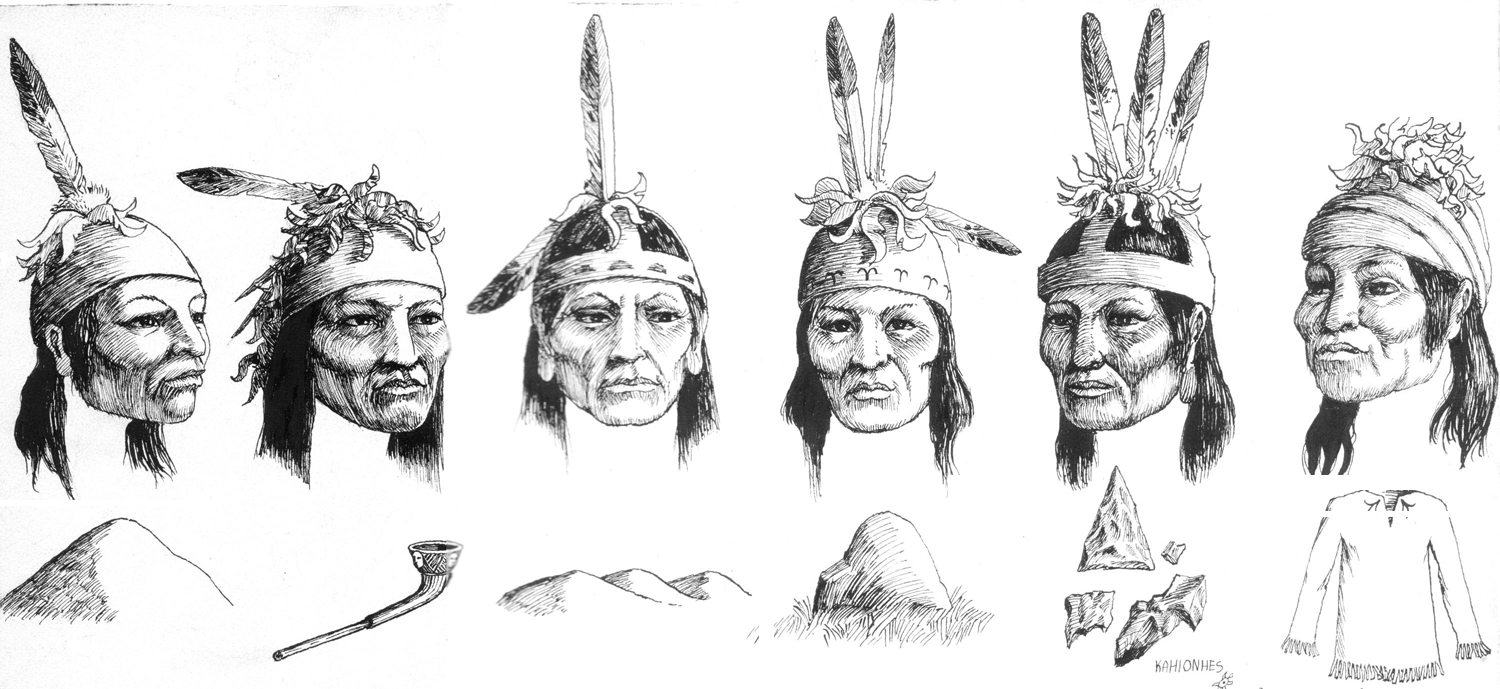History
 Ray, Christine, and John Fadden opened the center for its first season during the summer of 1954. The wood that went into the lumber of the initial structure was milled at a local saw mill from trees felled by Ray Fadden.
Ray, Christine, and John Fadden opened the center for its first season during the summer of 1954. The wood that went into the lumber of the initial structure was milled at a local saw mill from trees felled by Ray Fadden.
The center, originally two rooms large, expanded to four rooms producing a building approximately 80′ x 20′. The center’s design reflects the architecture of a traditional Haudenosaunee (Six Iroquois Nations Confederacy) bark house. The long bark house is a metaphor for the Six Nations Confederacy, symbolically stretching from East to West across ancestral territory.

There are many objects within the center. The floors are decorated with Haudenosaunee symbol & motif, and within the rooms are cases exhibiting artifacts. The walls are laden with informative charts, beaded belts, paintings and other indigenous items of interest. Up into the peaked ceiling of each room are representations of Native America as they are covered with artifacts including canoes, baskets, tools, beadwork, feathered headgear, Native clothing, and posters.
